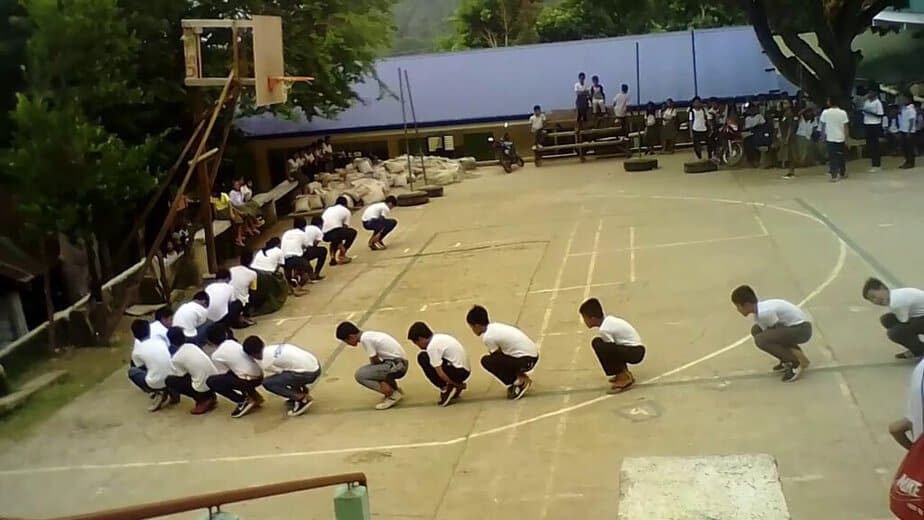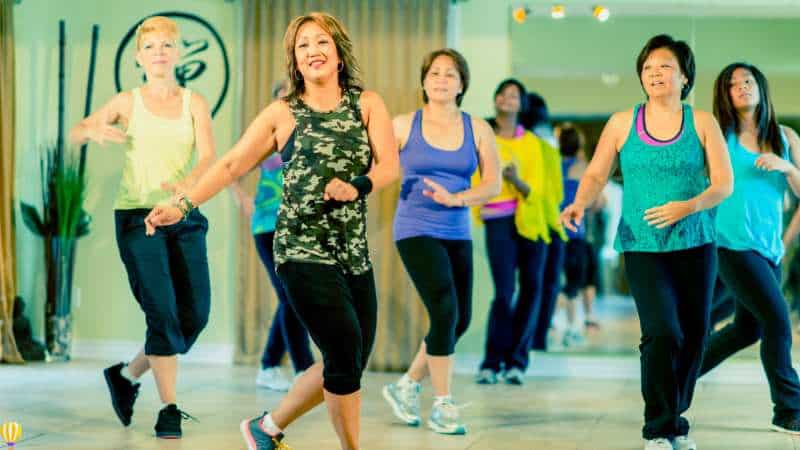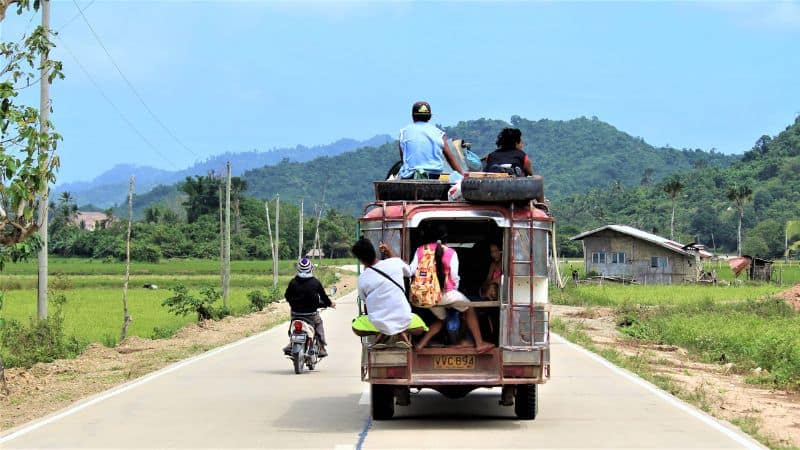Citizen Advancement Training (CAT) is crucial not just for high school students but for all Filipinos. It’s about building a foundation of good citizenship, which is essential for nurturing a responsible and proactive community.
When Filipinos lack a sense of good citizenship, the consequences are significant. Without this foundation, civic responsibility diminishes, leading to less participation in community and national issues.
This disengagement can result in neglected civic duties, weakening our country’s social fabric and governance. The impact is profound, affecting everything from local developments to national policies.
Promoting good citizenship through CAT for all citizens ensures a more informed, engaged, and proactive population, vital for the nation’s growth and harmony. We must champion this cause to foster a stronger, united Philippines.
Citizen Advancement Training
Citizenship Advancement Training is all about promoting good citizenship. It should be a core part of our education system and not just about military training. There are so many ways to be a good citizen, and this training can help us discover them all.
We should start teaching good citizenship from Grade 1. Kids need to learn values like respect, responsibility, and community involvement from a young age. These lessons help shape their character and prepare them to be active, positive members of society.
We also need advanced citizenship training for adults in every barangay. This ensures that everyone, no matter their age, can contribute to their community’s well-being.
This training should emphasize bayanihan, which is the spirit of communal unity and cooperation. It should also foster a deep love for our country and encourage active participation in civic duties.
By making good citizenship a priority in education, we can build a stronger, more united nation. Everyone has a part to play in this important effort.
History of Citizenship Education
Citizenship education in the Philippines has evolved through several initiatives, shaping the civic spirit of the nation with various laws and programs, especially targeting the youth.
The journey began back in 1950 with Republic Act No. 126, which established the Citizen’s Military Training (CMT). This program was the first formal attempt to integrate civic duties into the educational system, primarily focusing on preparing male college students for national defense.
In 1967, the scope of civic training expanded with the passage of Republic Act No. 4834, which created the National Service Law. This law introduced Civic Welfare Service, alongside military training, emphasizing community service and developing civic consciousness among students.
The introduction of the Citizen Army Training (CAT) in the 1970s marked a significant shift. CAT was mandatory for high school students and aimed at enhancing their understanding of citizenship responsibilities through basic military training combined with civic duties.
The evolution continued with the transformation of CAT into Citizen Advancement Training (CAT-II) by the Department of Education in the early 2000s. This change aimed to further emphasize citizenship values and skills among high school students, moving beyond just military training to include disaster preparedness and community service.
In 2001, the passage of the National Service Training Program (NSTP) Act, through Republic Act No. 9163, reflected a broader approach to civic education. This law replaced the previous military training for university students with more comprehensive civic education options, including community service and disaster preparedness, through three components: the Reserve Officers’ Training Corps (ROTC), the Civic Welfare Training Service (CWTS), and the Literacy Training Service (LTS).
The recent introduction of the Citizenship Training Program (CTP) aims to build on these foundations. This program modernizes the approach to civic education by focusing on nurturing informed, responsible, and engaged citizens through interactive and community-based learning experiences.
The evolution of citizenship training from CAT to CAT-II, and now to the CTP, illustrates the Philippines’ commitment to enhancing civic consciousness among its youth.
These programs are designed to ensure that the principles of good citizenship permeate through every level of education, preparing young Filipinos to contribute positively to society.
Despite challenges, such as debates over the mandatory nature of ROTC, these programs have remained crucial in fostering a sense of duty and patriotism among the Filipino youth.
Looking ahead, the continued adaptation and expansion of citizenship education programs like the Citizen Advancement Training (CAT) and the Citizenship Training Program (CTP) will play a key role in shaping a responsible and proactive citizenry, vital for the nation’s progress and unity.
My CAT and ROTC Experiences
When I was in my third year high school, I joined the COCC because I wanted to become an officer. However, I couldn’t continue due to the costs of uniforms and projects demanded by power-tripping officers.
In my fourth year, I chose to be just an element, and that’s when I started questioning how things were run. We spent our time marching around the plaza, and while standing, our strength was constantly tested by rifle-kicking officers.
During our CAT graduation, some officers were sent home early. Those who were power trippers became targets for revenge from others.
In college, ROTC was mandatory. It was tough. I was targeted by activist-hating officers, and many of our My lectures focused on how to combat NPAs. This training seemed more about fostering hatred than promoting good citizenship.
This wasn’t the kind of patriotism I knew. While I respect and salute soldiers for their sacrifices, I believe there are many ways to love our country.
Despite my negative experiences with CAT and ROTC, I realized the problems lay in the mindsets of the leaders, not the programs themselves. We can be peace-loving, good citizens.
For this reason, I recommend that our government expand the Citizen Advancement Training beyond schools. The Citizenship Training Program has a good curriculum that can foster good citizens and leaders if properly designed.
This expanded training should be promoted in every barangay, ensuring that good citizenship becomes a part of our national identity.

Citizenship Training Program and Tatak Bayani
The Citizenship Training Program, or CTP, is like an updated version of the old Citizen Advancement Training (CAT) many of us remember from high school. It’s been tweaked and improved to better fit today’s needs.
First off, CTP takes the basic ideas of CAT—like discipline and community service—but makes them more relevant. It’s not just about marching or physical endurance anymore.
The new program includes things like disaster preparedness, environmental awareness, and community health, which are crucial skills in today’s world.
One big change is how the program is taught. CTP uses more discussions and interactive activities instead of just drills. This means students aren’t just listening; they’re actively participating and engaging with real-life scenarios that help them learn better.
Another great thing about CTP is its inclusivity. It’s designed to be more welcoming and less intimidating, so everyone feels comfortable participating. It does away with the strict military-style hierarchy that often made CAT feel exclusive and stressful.
I really prefer this new version because it teaches us to be active citizens in a more holistic way. It’s not just about following orders; it’s about understanding why we do things and how we can make a real difference in our communities.
But why stop at schools?
I believe this program should be everywhere, not just in educational institutions. Imagine if every barangay had its own CTP under the banner of “Tatak Bayani.” That would really amplify the impact.
“Tatak Bayani” could be a symbol of our commitment to building better communities through active citizenship. It could be a way to unite people under common goals like improving our neighborhoods and helping out in emergencies.
The Department of the Interior and Local Government (DILG) could play a key role in this. They have the reach and authority to implement such a program nationwide, ensuring it’s done consistently and effectively across all barangays.
By making CTP a permanent fixture in every barangay, we’d be investing in our future. Every Filipino, not just students, would learn valuable skills that could transform our communities.
We need programs like CTP to help cultivate a culture of proactive involvement and genuine concern for our community’s wellbeing. It’s about empowering every citizen to contribute positively and make meaningful changes.
If we can achieve this, we’d see stronger, more resilient communities that can face challenges together. That’s the kind of patriotism that goes beyond textbooks and into the heart of what it means to be a Filipino.
So, let’s not limit the potential of CTP. Let’s expand it and make it a part of our daily lives, in every barangay across the country. This is how we build a nation of informed, active, and caring citizens.
Bayanihan: A Culture that Turns Ordinary Filipinos Into Heroes
Transforming Communities through Good Citizenship
Promoting good citizenship extends far beyond the school gates and reaches every corner of our barangays.
If we redefine patriotism—seeing it not just as marching or holding a rifle but as active community involvement—we can witness profound transformations.
One key benefit of practicing good citizenship is the heightened sense of community. When people feel connected to their locality, they’re more likely to participate in communal activities and support one another. This creates a supportive environment where everyone feels valued and important.
Good citizenship also enhances public safety. Informed and engaged citizens are more likely to cooperate with local authorities and participate in safety initiatives. This collaboration helps reduce crime rates and increases the overall sense of security in the community.
Moreover, when citizens are well-informed and actively involved, the governance improves. People start demanding accountability and transparency, leading to better leadership and more effective management of resources. This ensures that development initiatives truly reflect the community’s needs.
Economic growth is another significant benefit. Engaged citizens contribute to local economies through entrepreneurship and local employment. This boosts the local economy and reduces the need for people to migrate in search of better opportunities.
Environmental stewardship also improves with good citizenship. Citizens who are connected to their community care more about their surroundings, leading to more initiatives aimed at preserving and beautifying the environment.
Education systems benefit as well. Engaged parents and community members can contribute to schools, offering support that enhances educational outcomes. This collaborative effort can lead to better facilities, more extracurricular activities, and even scholarship opportunities.
Health outcomes also see improvement as communities with strong citizenship practices often have better access to healthcare services. Community health programs become more effective because there is a higher level of participation and support.
Additionally, promoting good citizenship helps bridge cultural and social divides. As people come together to work on community projects, they learn about each other’s backgrounds and cultures, which fosters mutual respect and understanding.
Finally, the overall quality of life improves in communities with strong citizenship. Cleaner streets, better schools, safer neighborhoods, and more cultural activities make everyday life more enjoyable and fulfilling.
Embed the principles of good citizenship into every aspect of community life so we don’t just create better communities; we transform them into vibrant, thriving places where everyone can succeed.
Let’s continue this conversation and explore more ways we can bring about such positive changes.

7 Good Citizenship Programs for Barangay
Barangay leaders can play a crucial role in fostering good citizenship by offering engaging programs to their community members.
Here are seven suggested 2-hour sessions that can be hosted right in your local barangay hall:
The first session could focus on Community Building. The objective is to strengthen bonds among residents through group activities. You might consider organizing small projects like a community cleanup or a shared garden. These activities not only beautify the neighborhood but also build a sense of ownership and pride.
Another great session could be about Disaster Preparedness. The goal here is to ensure that every household knows what to do in case of emergencies. Practical drills like earthquake or fire evacuation exercises can make the learning process interactive and memorable.
A session on Environmental Awareness could involve learning about waste management and the importance of recycling. An immersive experience might include a visit to a local recycling center or a workshop on making eco-friendly products, showing residents how small actions can contribute to a cleaner environment.
Health and Wellness programs are also vital. This session could aim to educate residents about basic health care and nutrition. Interactive cooking classes or a fitness boot camp can be fun ways to learn about staying healthy.
For the youth, consider a session on Leadership and Responsibility. Through role-playing activities, young participants can learn about leadership qualities and civic responsibilities. This kind of active participation helps instill confidence and a sense of duty among young citizens.
Cultural Appreciation sessions can help foster pride in our heritage. This might involve storytelling sessions, traditional games, or local craft workshops. Celebrating our cultural heritage together can be a powerful way to unite the community.
Lastly, a session on Legal Rights and Responsibilities could be crucial. Here, the focus would be on educating residents about their rights under the law and how to engage with local governance. Interactive Q&A sessions with local officials or mock voting activities can demystify governmental processes.
Remember, making these sessions interactive and engaging is key to their success. If you need ideas on how to make your programs more interactive, feel free to reach out. I’m here to help you design experiences that will not only educate but also inspire your community members to actively participate and take pride in their roles as good citizens.






